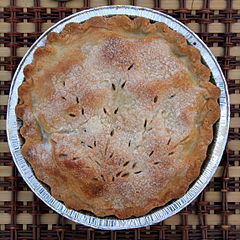The point of postmodernism is to get as far away from anything real as possible.
–Catherine A. MacKinnonPoints Against Postmodernism
Over the past year or so I have made comments critical of postmodern philosophy on this blog and in private conversations with friends. I have referred people to the insightful feminist criticism on postmodernism that is available on the Internet, but I have realized belatedly that people who interact with me, virtually or in real life, would rather that I myself explained the concepts involved here and why they are problematic. In this series of articles I am going to explain what postmodern philosophy is and why I consider it incompatible with a spiritual path. If you do not care about philosophy or if the word “postmodern” causes your eyes to glaze over, this is an important article for you to read, because you have been affected (or infected) by postmodern ideas without realizing it.We usually think of philosophy as belonging to an obscure and musty corner of academia having little to do with those of us in the real world. Philosophy is difficult and uses its own language, and philosophers for the most part are completely uninterested in making their ideas understandable to ordinary people. But while philosophy usually emerges from a rarefied and privileged atmosphere, it does not stay there. Eventually it moves into other academic disciplines, then into theology, pop psychology, art and politics. The postmodernism I am concerned with is the latter kind, the pervasive thinking inspired by postmodern philosophers (though not always faithful to them) that has bled into the mainstream and has taken people in some circles hostage. Unless we’re trying to show off, we do not call it postmodernism or any other name; we simply think of it as truth.Postmodernism stands in opposition to the principle that complete and perfect truth exists and that it is useful. Whether it is attainable is a separate question; the premise of postmodernism is that any reality residing outside of an individual’s subjective mental state is not worth contemplating. My own belief is that truth exists and that it is endless and pervasive, bigger than any self or collective concept. The mother of all truth is time, and it is through time that truth reemerges from obscurity while falsehood dies and confusion disintegrates. Truth nourishes each individual through her umbilical cord, but the flow of her life blood can be constricted for a variety of reasons. Some have reduced the flow to a trickle by declaring that every half-baked idea that comes into their head is true. It is “their truth,” which is as good as any other thing labeled as “truth” because truth can only be understood by the individual through subjective reason. They may change and modify “their truth” after listening to others speak “their truth,” but they will do so only if this modification causes no discomfort or otherwise serves their own utilitarian purposes. There is no need to abandon self-serving views if all subjective truths are valid.In the next post I will discuss the theoretical underpinnings for what results, in the real world, as the ultimate in rationalization.








